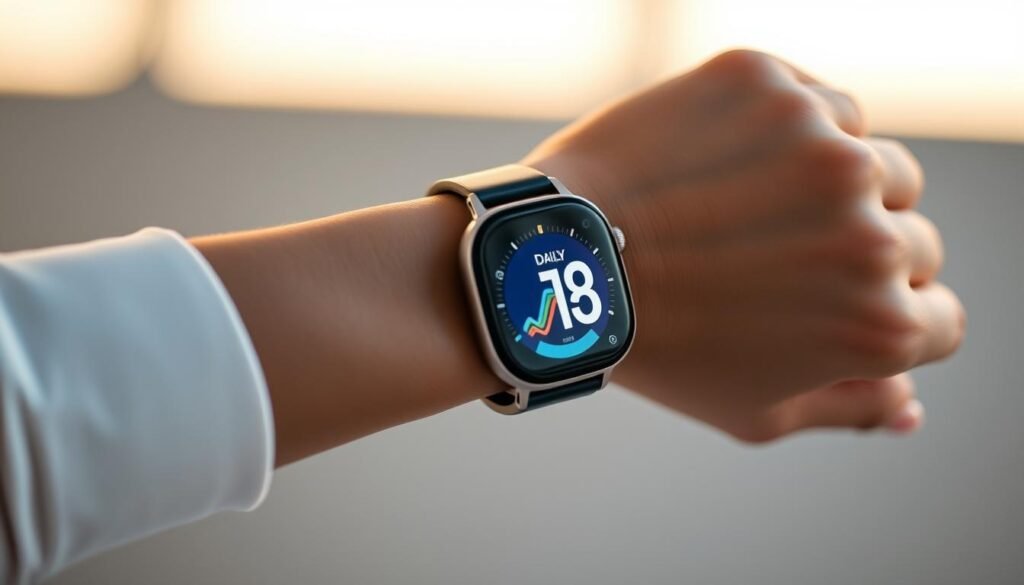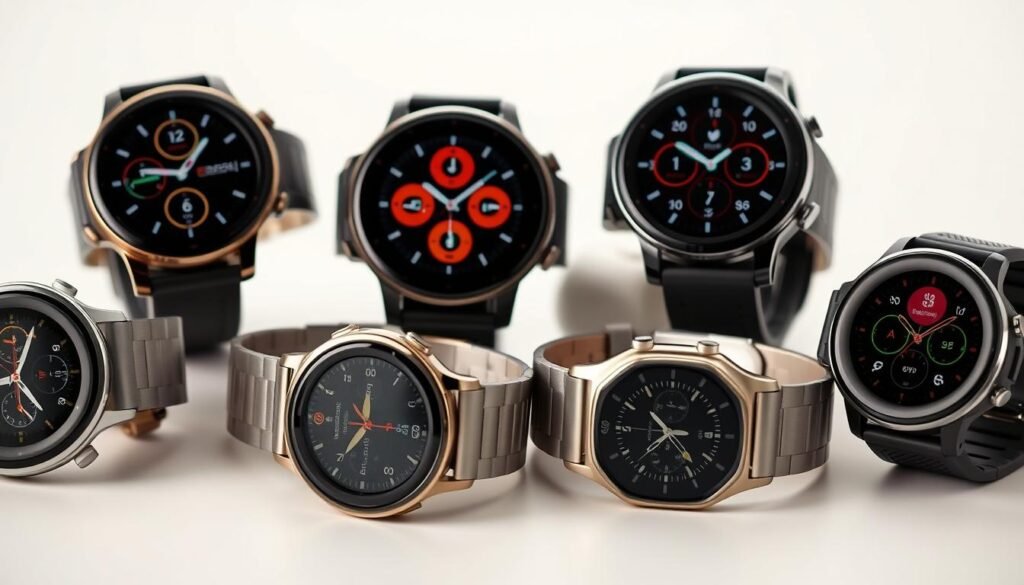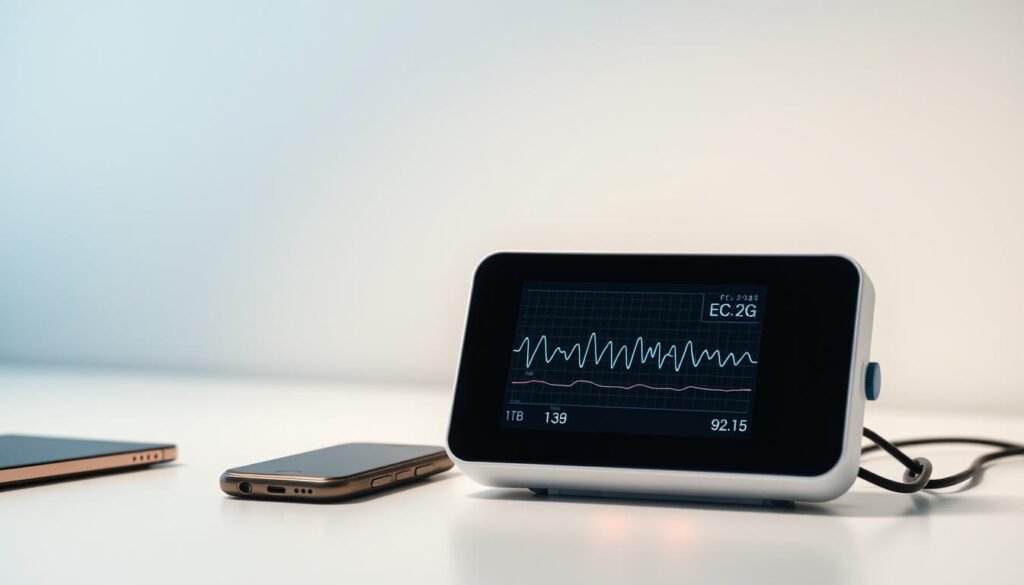The Science of Strength Training for Women Over 40

Strength training after 40 delivers clear, measurable benefits for muscle, joints, and metabolic health. This introduction explains why lifting matters now and how clear data can turn effort into results.
Clinical studies show that combining device-supported coaching with structured plans boosts activity and adherence in adults diagnosed with chronic conditions. One trial found smartwatch-supported coaching greatly increased initiation and long-term maintenance of activity versus coaching alone.
Tracking sets, rest time, heart rate, and weekly activity removes guesswork. That information helps people make smarter choices each session and build steady progress without overwhelm.
This guide will link research to practical steps: how to pick a device, set meaningful targets, monitor safety signals, and pair training with nutrition and recovery. Expect a practical, step-by-step approach so you can train with confidence and protect long-term health.
Key Takeaways
- Strength work preserves muscle and supports joint and metabolic health.
- Device-backed coaching greatly improves activity start and maintenance in adults.
- Tracking simple metrics turns workouts into actionable information.
- Choose tools and plans that match your health, time, and recovery needs.
- The article connects research to clear steps for steady, safe progress.
Why strength training after 40 matters—and how wearable technology keeps you consistent
Consistent strength work becomes crucial after 40 because muscle mass and bone density decline faster. Short, steady resistance sessions protect mobility and long-term health. Aligning workouts with clear metrics makes routines easier to follow.
Evidence-backed adherence: How devices boost activity and habit formation
High-quality studies show big adherence gains when people pair devices with coaching. In adults 40–75 with new type 2 diabetes, remote coaching plus a device produced 10x higher workout starts, 7x more activity at six months, and 3x at 12 months; over half met activity recommendations versus 17% of controls (PMC trial).
A meta-analysis and pedometer trials show trackers add ~1,800 steps per day, and simpler pedometer programs raised steps by ~660 after 12 weeks and stayed higher years later.
- Key features that work: specific goals, scheduled reminders, progress dashboards, small rewards, and social sharing.
- Safety and confidence: heart rate and effort sensors reduce uncertainty for people with health conditions.
- Pairing helps: humans plus data beat a device-only approach for problem-solving and long-term adherence.
| Measure | Typical change | Why it matters |
|---|---|---|
| Steps per day | +660 to +1,800 | Improves daily activity and metabolic health |
| Workout initiation | 10x higher with coaching | Critical to form new habits |
| 6–12 month activity | 3–7x higher | Shows sustained behavior change |
wearable tech fitness, smartwatch fitness goals
Translate outcomes into clear, weekly metrics so progress is visible and safe. Track steps per day, minutes in moderate-to-vigorous heart-rate zones, and completed strength sessions. Small targets reduce overwhelm and guide steady gains.

Translate outcomes into metrics: steps per day, heart rate zones, and weekly activity targets
Aim to nudge steps upward by 1,000–2,000 per day over several weeks. Add roughly one hour per week of moderate-to-vigorous activity as a target.
Use heart rate zones to steer warm-ups and finishers. Keep intensity matched to the session to protect recovery.
Behavior-change features that work
Enable reminders, set specific targets, and use progress dashboards. Small rewards like streaks help consistency.
Pairing devices with coaching for safety and better results
Coaching plus a tracker raises adherence in adults with chronic conditions. Weekly check-ins convert intention into routine and improve safety.
From intention to routine: scheduling and accountability
Time-block sessions, share selected metrics with a coach or friend, and plan short backups for busy days. Review what worked each week and adjust targets.
| Metric | Practical target | Why it matters |
|---|---|---|
| Steps per day | +1,000–2,000 over baseline | Boosts daily activity and health benefits |
| Minutes in MV zone | +60 min per week | Improves cardio and recovery tracking via heart rate |
| Strength sessions/week | 2–3 planned sessions | Preserves muscle and supports functional strength |
Choosing the right wearable for strength-focused training
Choosing a monitoring system that fits your routine helps you train smarter and stay consistent. Match device types to what matters most: accurate effort tracking, recovery insight, or simple daily monitoring.
Smartwatches for all-in-one tracking
Smartwatches like Apple Watch, Garmin Forerunner, or Samsung Galaxy Watch combine GPS, heart rate, sleep, and app ecosystems. They log strength sessions, sync with apps, and offer broad review dashboards.
Rings and clip-ons for discreet recovery
Rings (Oura, Ultrahuman) and clip-ons give quiet, comfortable recovery and daily movement insight. They excel at sleep and readiness monitoring while staying unobtrusive.
Smart clothing and chest straps for accuracy
Chest straps and armbands (Polar H10, MyZone) deliver the most reliable heart rate and effort data during lifts. Smart clothing can add muscle activation and posture cues for technique-focused lifters.
Comfort, budget, and subscription trade-offs
Consider wearability, battery life, and ecosystem compatibility. Some platforms require subscriptions for advanced recovery or blood oxygen analysis. Weigh upfront cost versus annual fees to find the best total value.
“The best device is the one you will wear consistently.”

- Practical tip: use a chest strap for accurate lifts and a watch for logging and daily review.
- Example review: Apple Watch for everyday use, Oura Ring for sleep, Polar H10 for precise heart monitoring.
Design your strength workouts using data—not guesses
Let session data guide your plan so warm-ups, sets, and rest are matched to how your body responds. Use simple metrics each time you train to keep intensity safe and effective.

Warm-up and intensity: Use heart rate, RPE, and tempo
Begin with mobility and tempo work while watching heart rate rise into a target warm-up zone. Move to main lifts when you hit that zone and a planned RPE that matches your session aim.
Why this helps: heart rate zones and tempo drills prime muscles and reduce injury risk without adding fatigue.
Sets, reps, and rest: Track volume and timing
Use your device or app timer to standardize rest intervals and log sets and reps. Tracking weekly volume makes progressive overload measurable rather than guesswork.
Live feedback for safer sessions
Enable real-time alerts for unusual heart responses during circuits or heavy sets. Pause and note any odd readings, and discuss patterns with a coach or clinician if you have specific conditions.
Consider smart clothing or external sensors to monitor posture and muscle activation for better technique and fewer setbacks.
- Track accessory work with heart rate and RPE to avoid overreaching.
- Review weekly trends—volume, intensity, and recovery markers—to adapt the approach as capacity grows.
- Combine subjective checks (how you feel) with objective monitors like HR and bar speed for session adjustments.
| Focus | Practical marker | Action |
|---|---|---|
| Warm-up | Heart rate warm-up zone | Do tempo/mobility until zone reached |
| Main lifts | Planned RPE and logged sets/reps | Progress load when weekly volume increases |
| Safety | Real-time alerts from monitors | Pause, document, consult if unusual heart or blood signs appear |
Recovery, sleep, and mental health: Smarter training by listening to your data
Listening to nightly sleep patterns and morning recovery signs helps you tune training without guessing. Use simple metrics as cues, not commands. Clear signals let you adjust load and protect long-term health.
Sleep tracking caveats and when to consult a clinician
Use sleep tracking to spot trends in total hours and wake frequency. Devices show patterns, but accuracy varies—don’t self-diagnose.
If you notice frequent wakings, loud snoring, or excessive daytime tiredness, bring that information to your clinician for evaluation for sleep apnea or other conditions.
Stress management and mindfulness for better readiness
Integrate short practices—breathing, body scans, or guided mindfulness—to reduce anxiety around metrics and improve recovery. Trusted resources include the WHO mental health overview, NIMH on anxiety, and APA guides on stress management.
Digital detox: protect focus without losing consistency
Customize notifications, set Do Not Disturb windows, and pick one or two key metrics to follow. Plan weekly mini detoxes to reset attention while keeping essential training reminders active.
- Interpret morning respiratory or blood oxygen trends pragmatically; use them to modify weekly load.
- Review privacy settings and share device data with your clinician when you have new medications or health concerns.
Fueling strength: Protein, healthy patterns, and considerations for health conditions
Nutrition supplies the raw materials your muscles need to repair and grow after strength sessions. Prioritize high‑quality protein and spread it across meals to support repair and strength gains.

Protein quality and timing for muscle repair and growth
Choose complete proteins like dairy, eggs, lean meat, fish, or plant combos (beans + grains). Aim for a portion at each meal and include protein within 60–90 minutes after a workout.
Everyday eating patterns: Blue Zones insights and diabetes-friendly choices
Adopt simple patterns—more plants, legumes, whole grains, and modest portions—reflecting Blue Zones ideas while noting critical reviews that urge balance. For adults with diabetes or other health conditions, follow CDC diabetes-friendly guidance and pair meals with activity for better control.
- Practical tips: use devices or trackers to log meals and hydration, but avoid obsessive calorie checks.
- If calorie tracking stresses you, switch to photo logs and consistent meal timing.
- Start small: add a protein-rich breakfast or include legumes at lunch and track how you feel over weeks.
Resources: Harvard T.H. Chan on protein; CDC on healthy eating for diabetes; Blue Zones overview and a critical review of longevity claims. Keep changes sustainable—steady diet and training improvements compound into better health and lifestyle outcomes.
Conclusion
When you track a few clear markers, training becomes a routine you can keep through busy months and life changes.
Turn evidence into action: pick a device that fits your life—smartwatches for all‑in‑one review, rings for recovery insight, and chest straps for precise heart data—so your tools match your training context.
Focus on a handful of metrics: planned sessions, steps, and one or two recovery signals. That limits overload and makes steady activity and strength gains realistic.
Pair trackers with coaching or an accountability partner to boost starts and sustain momentum during plateaus or busy periods. Balance numbers with how you feel, and ease off when sleep or stress signals suggest a lighter day.
Next step: choose your device, set weekly goals, schedule sessions, and review results at the same time each week to keep progress visible and motivating.





